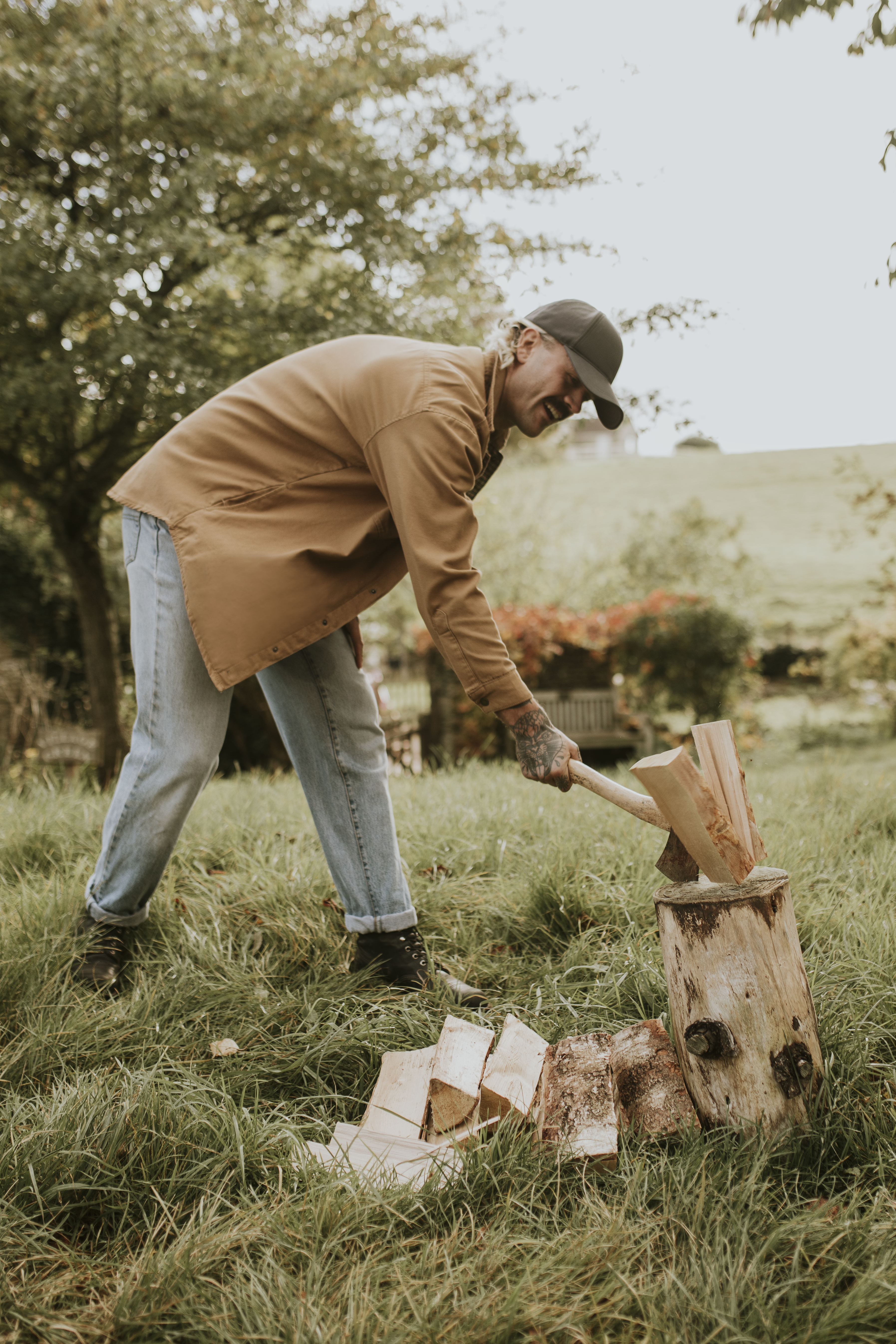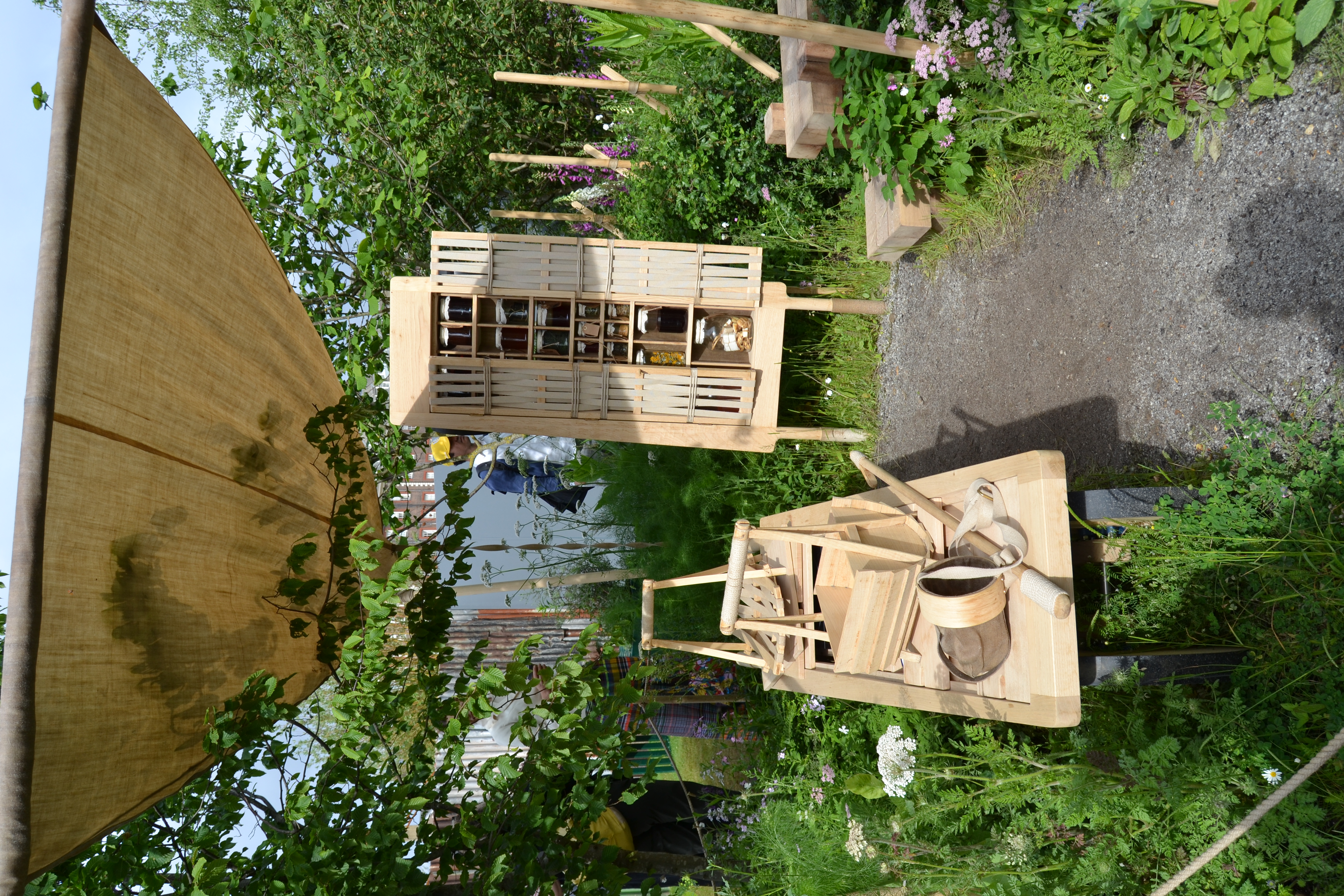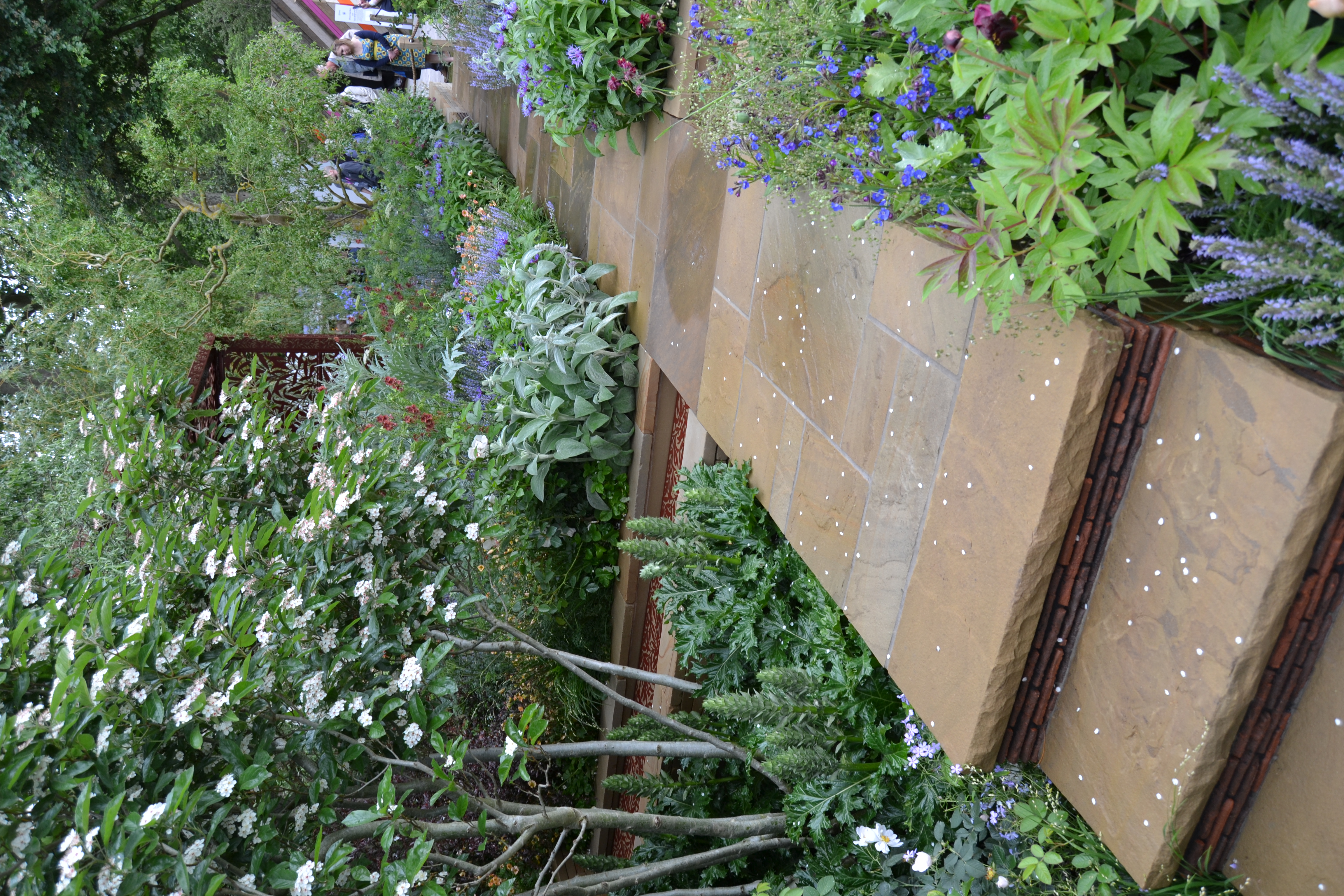Garden Trends 2023-2024
JdC Garden Trends is the definitive venue at which to plan and firm up your collections for the coming seasons. A diversified and in-depth array of products on display offer you the chance to carry out your sourcing in lockstep with both the market and your retail brand policy. To help you in this task, your exhibition has teamed up with the industry’s go-to consultancy when it comes to garden trends, CHLOROSPHERE. Its Trend Consultant Manuel Rucar, working in association with a team of international trend spotters, takes the temperature of the market, deciphers sales statistics, surveys consumers and transforms these insights into the main phenomena that we should expect to see. Here we look forward to the 2023 and 2024 collections to get an enlightened vision on tomorrow’s market.

If we were to take away just one outstanding trend for the coming seasons, what would it be?
Manuel Rucar: I would answer with a dichotomy! Consumers are more self-contradictory than ever. On the one hand, we can observe the clear incorporation of renaturation in the garden world, and on the other the need for colourful futility. In a nutshell: purchases will veer between ultra-natural products and, at the other end of the scale, colourful merriness (while remaining environmentally aware!). These two points will be in abundant evidence during the three days of the show.
What is Renaturation about?
M.R.: It’s a more natural conception of our space, which respects the soil, biodiversity – fauna and flora – and more generally, life itself. This concept, which is in phase with permaculture, has already been seen in practice in landscaping for several years, and it’s also becoming increasingly visible among private consumers: solvent-free water-based paints, locally sourced wood, hand tools, the rejection of plastic and resin, the rejection of cultivated plant species, the rejection of industrial formulations in pet food, etc. The whole movement is an attempt to restore our living spaces, de-concrete our cities, de-tarmac school playgrounds, reinvigorate streams in towns and cities, respect places’ existing geography and their local essences. It is a total inversion of how we have always conceived landscaping. Today, a landscaper doesn’t start from a blank sheet on their project, they have to consider the trees already in place, the lie of the land, rainwater run-off, and soil permeability.
It’s quite astounding when you look at 2022 and compare it with 2002 for example. In the space of 20 years, the way of designing outdoor space has been almost turned on its head. It’s a new school of thought, a new way of designing the “garden” space or the “green” space which is no longer just a nice-to-have add-on, but actually a green lung. It’s also a strategy that cities use to counteract the urban exodus: young people go to college in the large cities, they rent flats in the city centre and live in the city at the beginning of their careers, but once they hit 30 they don’t appreciate it as much, they start yearning for space, and move out to the suburbs and increasingly to the countryside. Municipalities are aiming to curb this impact, which is all the more acute since there is much less appeal in high street retail than there used to be 10 years ago. So yes, it’s a structural trend that’s here to stay, in fact it’s a new society that’s taking root. You simply have to look at how degree courses are framed by landscaping colleges. We are shifting from space designers (with all the architecture and mineral content that goes with it) to genuine “land ecologists”.
How does this concept play out in products?
M.R.: Here, you simply have to look at what’s happened in the garden tool section. The answer is obvious. Nearly all the brands have (re)adopted wooden handles – which had all but disappeared five years ago! Everything used to be made from plastic or coloured metal. Today, we’re seeing the comeback of handles made from chestnut, walnut or other, quite noble essences, and unrefined metal parts, stainless steel or iron, painted black. This is a sure-fire sign that the market has adapted to a demand for slightly more authentic products.
So to answer the question more broadly, in general in garden centres, we’re seeing the comeback of best practices, a halt on plastic, and the provision of more natural equipment and materials, like mulch for example where you can but marvel at the multitude of options available: hemp, miscanthus, buckwheat, cocoa hulls, peach stones… 20 years ago, all we had was pine bark!
On the plant side, in the tree section, we are seeing newfound enthusiasm for forest essences: oak, maple, hornbeam, beech, etc. For bushes and flowerbeds, there is more focus on biodiversity with melliferous species, in particular to support pollinators. Overall, while this doesn’t describe the whole market, it’s an underlying trend towards less nursery-bred plants and more natural ones.
Has Joe Public gardener also adopted this renaturation trend?
M.R.: One of the areas where this trend can actually be seen the most is in the vegetable patch. Today we can clearly see two philosophies (sometimes on the same patch): either hyper-productivity (I’m buying varieties that are sure to produce and grow big vegetables of high quality) or discovery through nature and this concept of permaculture which has become established in recent years consisting of planting heritage, authentic varieties which may sometimes not be very productive, but at least are reproducible or self-propagating. On the shelves, at the moment, the notion of hyperproduction is still dominant, but every year we see that the proportion of disciples of a more natural conception of the vegetable patch is gaining ground, and is far from inconsequential. Approximately 30% of consumers today go down this avenue as a matter of conviction.


Is renaturation on the agenda for suppliers too?
M.R.: Like in many market verticals, it’s a big question mark because you realise that a lot of burning topics had been hidden under the carpet that were managed in the shadowy zone of Asia, even in the garden market. Some materials can be found in France like miscanthus for example, which is developing a lot, or flax, another example. But for the best possible outcomes, sourcing in Europe remains essential since we don’t have all the materials or industries in our country: clay reserves for the terracotta used for plant pots that comes from Spain and Portugal, or wood for garden chalets and structures, which mainly comes from Poland, or aluminium from northern Europe. You can’t just, in just a few months, kick an Asia-dependent habit that’s been ingrained for decades. The willpower is certainly there: every day I can see the sincerity of all the suppliers on our Planet Garden, but we still have to find tangible answers.
Can we speak of innovation in renaturation?
M.R.: You have to exercise caution, because the very concept of renaturation is precisely to give some space back to nature, so the answers are already there! For example, to rehabilitate a water course, people will use coconut matting to stabilise the banks, which were previously made of concrete, so that’s the type of innovation you have to turn to: common sense, how things used to be done. There is no point imagining a more natural and more modern future like connected indoor vegetable nurseries. I’m talking about another concept here. If you’re talking about vegetable growing, self-sufficiency is a utopia that very few ultimately achieve, however in the choice of varieties, there’s a focus for example on perpetual vegetables: i.e., vegetables that you plant once and that produce several times, a bit like the potato with which the gardener is familiar, but it’s also the case with chard and all these perennial vegetables that you can read about in various media.
You say that the consumer is full of self-contradiction; how does this reflect in their purchasing behaviour?
M.R.: If we were to analyse an average consumer, we would see that out of three items purchased, they will look for one that conveys values, defends a cause and fits in with their lifestyle or philosophy: it could be a product that is hand-made, locally sourced, cruelty free, vegan, organic, or any other respectable value. However, their two other purchases will fall outside of this scope, and will fulfil an impulse or the need for a low price. Of course, when you read that, you could always say to yourself that the consumer is not particularly reasonable, or that they buy “better” only when it suits them… but what we need to take away from that is that a third of all purchases (yes, a whole third) are channelled towards values! They have a duty to be transparent, clear and understandable! It’s quite a change. Only ten years ago this type of purchase accounted for 4 to 5% of products across all categories, and now we’re at 30%. So sure, the consumer isn’t perfect, they are self-contradictory, but overall, you can’t deny the fact that responsible shopping is gaining market share.
Do your analyses indicate that this trend is overarching?
M.R.: Actually, talking of trends, every powerful and marked movement has an equal and opposite one! So you may not be surprised to learn that colour is set to make its comeback in our gardens in the near future. Pink, for example, which hadn’t been in the forefront since 2012, is highly anticipated and is already cropping up in fashion and interior design. This year and in the seasons ahead, we will therefore be seeing bright colours pretty much everywhere. Is this a way of breaking with the monotony of green? Yes, but still staying environmentally friendly – there’s no way we’re going back to a 100% plastic world.


In terms of retail, how should shops plan to adapt?
M.R.: To start with, we should note that 12 to 15% of suppliers today have a system enabling them to sell directly to consumers, either through a dedicated website or a factory outlet for example, without forgetting the horticulturists and plant nurseries that sell direct. This quite recent movement, which has been considerably buoyed by the growth of online shopping, allows a more direct connection between the manufacturer and the consumer. This connection is liable to encourage brands to redevelop “ex-industry” products that are more authentic and less mass-produced. I’ve seen this happening with tools, earthenware, greenhouses and even in plants! We’re shifting from a mass production system where companies would produce huge quantities of the same thing to cater to the widest audience, to a large quantity of companies or brands with much more distinctive products that aren’t going to please everyone, but will delight people looking for something original or unique! On the market we are therefore basically seeing a rejection of uniformization, standardisation and the consumable, cheap product that only lasts a season or two and finishes on the local tip. On the contrary, producers and suppliers with direct selling outlets to consumers are attracting growing interest. This is also the case for small businesses like landscapers or florists with a specific signature, and also the case for concept stores which have been popping up all over France in recent years and offer more customer proximity.
And so let’s move on to customers: what should be our ‘take’ of them, both now and in the future?
M.R.: The “pleasure product” industries (sport, fashion, cooking, travel, beauty, interior design, etc.) all forecast that by 2025, half of their customers will be made up by Millennials. It is this specific generation that holds all the cards today. Up to now, we were talking about 43 to 46% of the working population. And so very soon, the demographic bar of 50% will be surpassed. Any brand or retail chain that hasn’t yet targeted this population is running a strategic risk! We have been warning the sector for several years, and I am still seeing that this population doesn’t relate to today’s garden retail model, which isn’t the case with interiors and beauty, which have fully adapted to this population. Simply look at what consumers are buying and posting on social media, and then look at what you can find in garden centres: at times the gap is huge. And it is all the more crucial considering that this new population is in the process of settling down in their lifestyle, their consumption patterns, establishing their homes and of course their gardens… so therefore they have needs, desires, and also higher purchasing power.
Since this customer has an influence on consumption, what tangible developments should we be anticipating in the coming quarters?
M.R.: If we were to look at products by main category, there are indeed question that will start coming back with increasing frequency:
PLANT sector:
- What about the energy impact of sourcing from the Netherlands, because many producers have indicated they were putting their activities on hold in winter 22/23. Will there be a fall, followed by a rise in the price of loss-leaders (orchids, monstera, etc.)? And an even larger price increase on collector plants?
- Flowers and local origin: a pain point issue in flower shops; does the same apply to garden centres? Are we likely to see compulsory or at least recommended origin labelling for flowers, as is the case with fruit and vegetables? How will consumers react? What slant will the media take on the subject for Valentine’s Day 2023?
- Drought resistant plants: a section in its own right? How strong is this sales proposition to suppliers? How do customers respond to the term“self-sufficient plant”?
- Self propagating seeds and varieties: when the concept of renaturation extends from landscapers to consumers.
PETCARE sector:
- An increase in “cereal free” formulations in pet food – what diets for tomorrow?
- Pet licences: how does that change consumer behaviour? The end of impulse buying in pet shops and sections – how do stores respond?
HAND & POWER TOOL sector:
- Hand-held electric ranges: a shift downmarket for historic brands (Stihl, Gardena) and a shift upmarket for professional ranges seeking to expand into the consumer market (Hilti, etc.).
- What results for robot lawn mowers in 2022 following the drought?
POTS/PLANTERS sector:
- The reshoring of production is highly expected: what do the manufacturers think? What brands can offer a guaranteed 100% made in Europe product? What materials do the best in terms of carbon footprint? What will tomorrow’s pots and planters department look like between resin, cement, plastic, fibre, ceramic and terracotta?
HOME section:
- With home composting set to become a legal obligation in January 2024 (in France), what range of composters are arriving on the market?

With all these considerations, it is now up to exhibitors to offer ranges that meet the needs of retailers so that they can truly attract and win over consumers!
Meet our partner CHLOROSPHERE during the 3 days of the show for theme-based talks and an exploratory walk through the trends of the forthcoming seasons.
© Chlorosphère & DR

